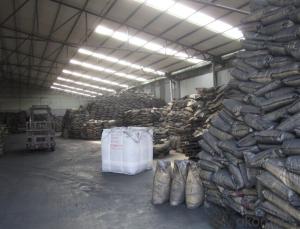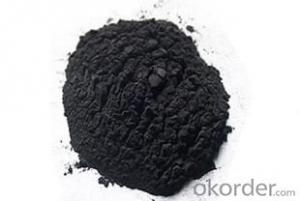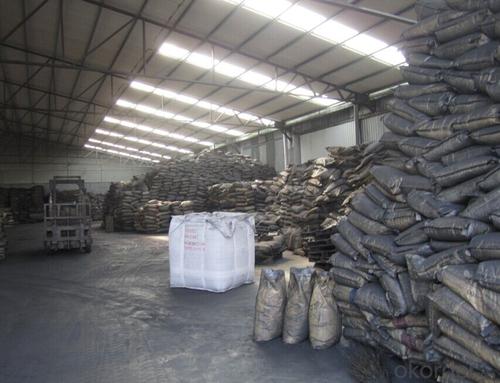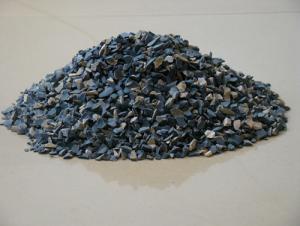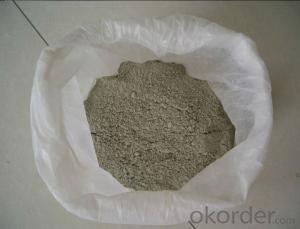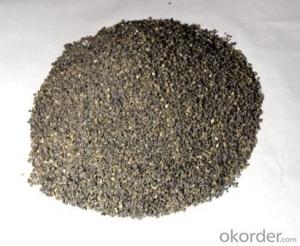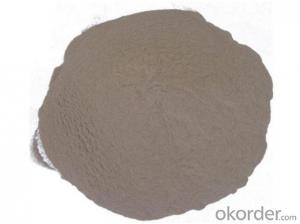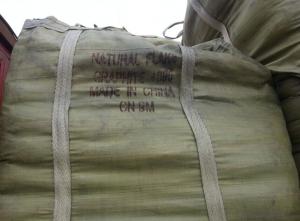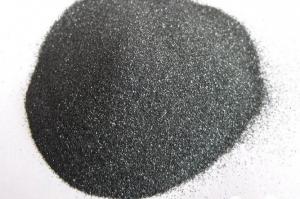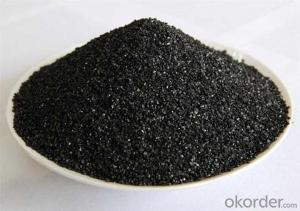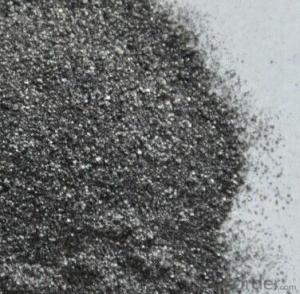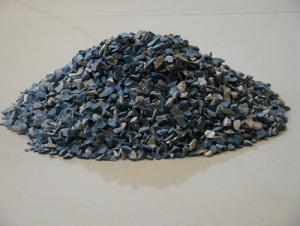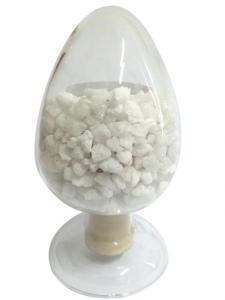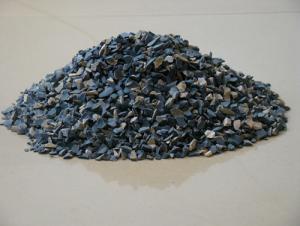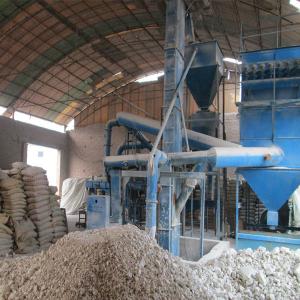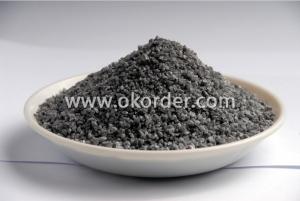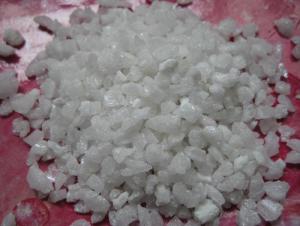High Purity Flake Graphite - Raw Materials for Refractory
- Loading Port:
- Qingdao
- Payment Terms:
- TT OR LC
- Min Order Qty:
- 50 m.t
- Supply Capability:
- 5000 m.t/month
OKorder Service Pledge
OKorder Financial Service
You Might Also Like
Flake Graphite With High Purity And Good Quality
Features
High-purity graphite,
High carbon graphite,
Medium carbon graphite.
Usage
Crystalline flake graphite is widely used as an essential nonmetallic material in almost all industries. It can be used as high quality refractory material or coatings in metallurgical industry, black lead in light industry, and carbon brush in electronics industry, electrode in battery industry and catalyst in chemical fertilizer industry. After being deep processed, crystalline flake graphite can be used to produce TV tube coatings, graphite friction reducing additives and many other high tech product.
Characteristics
Perfect crystallization, thin flake, good flexibility, excellent chemical and physical properties, superior conductivity, self lubricity and resistance to temperature, corrosion and hot shock etc.
Specification
PROPERTIES | F1 | F2 | F3 |
Medium Carbon | High Carbon | High Pure | |
Carbon | 85-95% | 96%-99% | 99.9% |
Mesh | 45 μm-500 μm (325mesh-35mesh) | ||
L.O.I. | ≥80% | ||
V.M. | ≤4% | ||
Moisture | ≤0.5% | ||
Color | Black Shiny, | ||
Appearance | Flake | ||
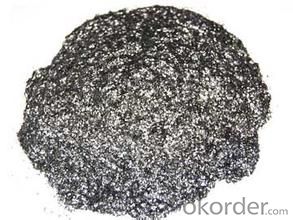
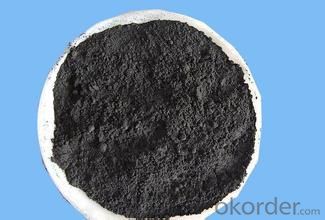
- Q: Does anyone know the characteristics of refractory for glass kiln?
- Quartzitic sandstone. Also known as quartzitic sandstone or white gravel. Which is a kind of natural refractory and quartz sandstone bonded by the kaolinite. Who appearance is better to be steel-grey, dense and hard, free of impurities and stripes. Its main crystalline phase is mainly quartz and kaolinite. Which has obvious stratified structure and anisotropism. The refractoriness fluctuation is between 1650~1730 ℃. The expansibility of quartzitic sandstone is different from that of silica?brick, who has maximum coefficient of thermal expansion under temperatures of 700 ~ 800 ℃, and it is most likely to burst at this time. The load softening temperature and the compression strength of calcined quartzitic sandstone have been improved significantly, with small residual expansion, stable volume, better thermal shock resistance, so it is generally to use calcinated quartzitic sandstone as refractories. which has been widely used as sidewall blocks on the small and medium sized furnaces.
- Q: Who can tell me what is neutral refractory?
- Neutral refractories refer to the refractory materials which will not react greatly with both acidic and basic slag at high tempreratures. Such as carbon refractories and chromite refractories. The main components include carbon, silicon carbide, aluminum oxide, chromium oxide and other trivalent oxides, such as carbon refractories and chrome refractories, etc. Strictly speaking, neutral refractories refer only to the carbonaceous refractories, including carbon brick and graphite silicon carbide products, etc.
- Q: What kinds of refractory will be used in kiln of sintering ceramics?
- High alumina brick, clay brick, insulating brick and silicon carbide plate.
- Q: What's the requirements of fire-fighting criteria of heat insulating material?
- Specific provisions go as the following article 8: roof grassroots adopted duration of fire resistance is the non-combustible component that shouldn't less than 1.00 h's. Its roof insulation materials should not be below B2; Otherwise, the combustion performance of insulating material should not be below the B1 level. Article 9: The junction of the roof and wall, the insulation layer around the opening part of roof should use the grade A thermal insulation material to set level fire-fighting belt that width is not less than 500 mm. Article 10: the roof waterproof membrane or flammable insulation layer should adopt incombustible material to cover.
- Q: which kind of material should be used in fireproofing cabinet?
- Here are a few good materials: 1. The mineral wool board, glass wool board: it mainly tales mineral wool, glass wool as insulation materials. It's non-combustible, light weight and has good high temperature resistance, but there are shortcomings ① short?fiber will harm the human respiratory system, ② poor sheet strength, ③ poor barrier property of sheet for smoke of fire disaster, ④ poor decorative properity, ⑤large installment and construction work. Thus, most of the boards were sheets that take inorganic anchoring material as base material, glass wool as reinforcing material. 2. cement board: Cement board has high strength and wide sources. It is often used in fireproof suspended?ceiling and partition in the past, but it has poor fire resistance and is easy to burst and lose protective function , which will limit it's applications. Cement concrete component has good thermal insulation and sound insulation properties, and it can be used as partition and roof board. Fiber reinforced cement board and other improved varieties appear in the construction?materials market, and they are high strength and have good fire resistance, but their disadvantages are poor toughness, large alkalinity and poor decoration effect. 3. perlite board, cenosphere board, vermiculite board: It's a kind of hollow plate that takes low alkalinity cement as base material, perlite, glass beads, vermiculite as the aerated filling material, and is made by adding some auxiliary. It has characteristics of light weight, high strength, good toughness, fireproofing and thermal insulation, easy for construction,etc. and it can be widely used in high-rise building frame compartment, household, bathroom, kitchen, communication pipe and other non-load bearing areas.
- Q: What dose the fireproof and thermal insulation material include?
- It includes A1: Non-combustible inorganic monomer; A2 Non-flammable organic compound, namely composite material; A3 Modified phenolic fireproof materials.
- Q: What's the refractory material in common use currently?
- (1) Alumina-silica refractory brick: Except the transition band, hot end and firing zone of the rotatory cement kiln, it can be applied to the whole burning system of the precalcining kiln, such as the fixed wall lining, wicket, cooling machine, tertiary air duct, burner, etc. It mainly includes alkali-resisting brick, high alumina (anti stripping) brick, silica-mullite brick, etc. (2) Basic refractory: For the upper transition band close to the part of burning zone and the burning zone, its inner lining can endure the highest flame temperature of 2000℃ and material temperature of 1350℃-1400℃, and it also has to withstand the permeation of sulfur and alkali compounds, permeation, thermal shock and oxidoreduction of hot-melt clinkers (liquid phase), mechanical stress of elliptic cylinder deformation, etc. Therefore, inner linings are the most demanding parts to withstand stress, and only basic refractory can meet with requirements under this working condition. (3) Fireclay insulating refractory: Its microstructure has notable characteristics of high porosity, large pore size and thermal insulation performance. For its low volume density and light weight, it is usually referred to as lightweight refractory. Fireclay insulating refractory product has great varieties, and it is usually classified and named according to its chemical and mineral compositions or production raw materials, and it is also classified according to its operating temperature and material form. Currently, the most used main thermal insulation material for the precalciner kiln system at home and abroad is calcium silicate board; besides, light weight castable and insulating fire brick are increasingly used year by year. Other thermal insulation materials are mainly ceramic fiber products.
- Q: How to deiron refractory?
- It cannot be done in conventional approaches, because you are referring to refractories. If using acid liquor soaking method to deiron, the material itself will be also damaged! If just for reducing the corrosion of materials, it will be OK to add a corrosion-resistant and fireproof protection layer.
- Q: Who knows about the fire endurance of grade C fire doors?
- It can be classified according to the fire endurance and thermal insulation performance: The fire endurance of grade A fire doors is not less than 1.5 hours; that of grade B fire doors is not less than 1.0 hours; and that of grade C fire doors is not less than 0.5 hours. I hope my answer can help you.
- Q: How many fire endurance grades are the AAA fire resisting shutter divided?
- According to the fire endurance, the fire doors can be divided into Class A, Class B and Class C fire doors with the fire resistances are not less than 1.20h, 0.90h and 0.60h. Even the fire resistant level of B can also use the first rate fire resistant door.
Send your message to us
High Purity Flake Graphite - Raw Materials for Refractory
- Loading Port:
- Qingdao
- Payment Terms:
- TT OR LC
- Min Order Qty:
- 50 m.t
- Supply Capability:
- 5000 m.t/month
OKorder Service Pledge
OKorder Financial Service
Similar products
Hot products
Hot Searches
Related keywords
